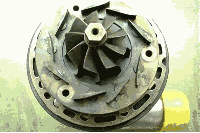ACTUALLY, physics called and said that your opinion got REJECTED! heheh
"Evaporating a kilogram (ie a litre) of water requires 2257 kilo-joules of energy – and that’s a lot! If the nozzle flows 400 ml/minute, and if all the water evaporates, each minute 903 kilo-joules of energy are extracted. One joule per second is the equivalent of 1 watt, so fully evaporating 400 ml/min of water provides a cooling power of 15 kilowatts! Even a 130 ml/min spray provides a potential cooling power of just under 5kW.
The key point is that the water must evaporate – it is this change of state from water to a gas which absorbs the energy. If the water droplets do not evaporate, they basically provide almost no cooling performance. And the key to getting water to evaporate is to use very small drops – an atomised mist – which dramatically increases the surface-area-to-volume-ratio of each drop, promoting evaporation.
In addition to drop size, the rate of evaporation will also depend on the relative humidity of the air (if you like, an indicator of how much ‘room’ there is left in the air for evaporated water) and the temperature of the heat exchanger.
With a good enough spray, there is no technical reason why the temperature of the intercooler cannot be brought lower than ambient. After all, that’s how evaporative air conditioners work..."
So in summary, the water temperature hardly matters as it will still evaporate when faced with a large amount of incoming air (even hot air and even if the water is hot itself). There will almost always be some evaporation unless you have very high humidity.






 Reply With Quote
Reply With Quote












Bookmarks